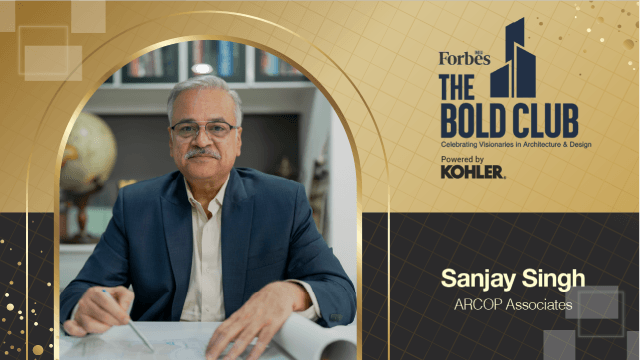
Sanjay Singh: Director – ARCOP Associates Pvt. Ltd.
Sanjay Singh, Director at ARCOP Associates Pvt. Ltd., has an impressive career spanning more than three decades designing state-of-the-art buildings in almost all disciplines. A distinguished figure in the field of architecture, Singh has been conferred with numerous accolades for his designs. With every new project Singh is filled with excitement and curiosity like a child exploring a world of endless possibilities while solving a puzzle. Each architectural element draws inspiration from small anecdotes of life that manifest themselves into defining elements of the end product. Singh believes in the transformative and positive power of AI (Artificial Intelligence) in the architectural field. As he puts it, “Artificial Intelligence can be exploited to create quick solutions to a problem that is defined and controlled by Design Professionals.” As the world grapples with environmental challenges, architecture plays a crucial role in sustainability. Creating energy efficient designs intertwined with new age technologies and newer materials are imperative to address environment issues and reduce carbon footprint of the built environment.
Sanjay Singh, Director at ARCOP Associates Pvt. Ltd., has an impressive career spanning more than three decades designing state-of-the-art buildings in almost all disciplines. A distinguished figure in the field of architecture, Singh has been conferred with numerous accolades for his designs.
Growing up in Delhi Singh was intrigued by the built environment around him. The intricately carved wooden doors of his childhood home, visits to Delhi’s historical monuments, with their inscriptions and patterns, and their sheer grandeur sparked an early fascination and admiration for design. Observing his elder brother pursue architecture further ignited the spark in him to make a career in a field that thrives on innovation rather than repetition. Architecture gave him the opportunity to observe and reinterpret in a new way every time.
With each new project Singh is filled with excitement and curiosity like a child exploring a world of endless possibilities while solving a puzzle. Early mentorship under esteemed architect Ramesh Khosla instilled a strong ability to envision designs even before the client finished the brief. The initial stages involve understanding the project in relation to personal experiences and imaginative interpretations. Once the vision has crystallised, functional layers are added followed by meticulous detailing that brings space to life. Each architectural element draws inspiration from small anecdotes of life that manifest themselves into defining elements of the end product.
Among the many projects that embody Singh’s vision of simplicity and functionality, ‘Jaypee University’ at Noida is an impressive example. The university has been designed in a simple straight-line architecture with exposed bricks, exposed concrete, and Kotah stone, reflecting cost-effective sustainable design. Double walled facades, large verandahs, central atriums, and courtyards reflect commitment to environmentally sustainable green buildings. Thoughtful plans such as stairs with courtyards, terraces, and social spaces encourage students to engage and adapt to outdoor reading and learning. This integration and blurring of lines transitioning from outdoor to indoor spaces have resulted in a unique project which was awarded the Governor General of Canada Gold Medal For excellence in Architecture in 2008.
Singh believes in the transformative and positive power of AI (Artificial Intelligence) in the architectural field. Though it may be daunting for its impact on creativity, AI should be seen as a powerful design tool rather than a replacement for human sensitivity. As he puts it, “Artificial Intelligence can be exploited to create quick solutions to a problem that is defined and controlled by Design Professionals.”
As the world grapples with environmental challenges, architecture plays a crucial role in sustainability. Creating energy efficient designs intertwined with new age technologies and newer materials are imperative to address environment issues and reduce carbon footprint of the built environment. Singh's advice for young architects is to work hard, be self-critic and be sensitive to their surroundings and context. Reading, traveling, and engaging with diverse experiences can provide invaluable inspiration to create amazing designs.